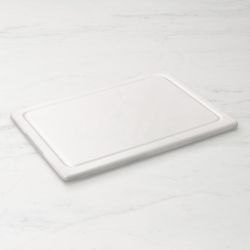All About Beets

Beets were unglamorous kitchen staples for generations, but now they are showing up on every fashionable menu. Many boast a deep, rich red color combined with a sweet, earthy flavor and tender texture, making them a favorite with chefs and home cooks alike.
Today it is not unusual to find pink, golden, white and even striped beets in the markets. These festive looking vegetables are served warm as a side dish, cold in salads, pickled or made into the famous beet soup, borscht. Young, fresh-looking, bright green beet greens from small or medium-sized beets are delicious. Sauté or steam them as you would spinach.
Selecting
Beets are available year-round but are at their best in late summer and autumn. Look for firm, rounded vegetables with smooth skins and no noticeable bruising. Fresh beets, sold in bunches, should have the greens attached and 1 to 2 inches of root end, which looks like a tail. Do not buy beets with wilted, browning leaves—the leafy greens indicate the freshness of the beets. If the greens have been trimmed, look for bunches with at least 2 inches of stem still attached.
Storing
Cut the greens from the beets as soon as you get home, leaving 1 to 2 inches of stem attached. The beets will not spoil if left at cool room temperature for a few days, but they do best when refrigerated for up to 10 days. If they turn soft, discard them. Beet greens should be washed and cooked on the day you buy them. They do not keep well; if necessary, however, they may be put, unwashed, into a perforated plastic bag and refrigerated overnight.
Preparing
Beets are best when cooked whole and unpeeled, then peeled and sliced, chopped or mashed afterward. Roasting beets intensifies their flavor and color; be sure to wrap them in aluminum foil first so you won't have to clean the pan. If boiling beets, leave about 1 inch of the stem and the root end intact to keep the beets from "bleeding" into the cooking water. Once they are fork-tender, let them cool and then slip off their skins.
When working with red and pink beets, be prepared for beet-red stains on your hands and countertops. Because the color is difficult to remove from wood or plastic surfaces, you may want to work on waxed paper and wear gloves.
Adapted from Williams-Sonoma Kitchen Companion: The A to Z Guide to Everyday Cooking, Equipment and Ingredients (Time-Life Books, 2000)
